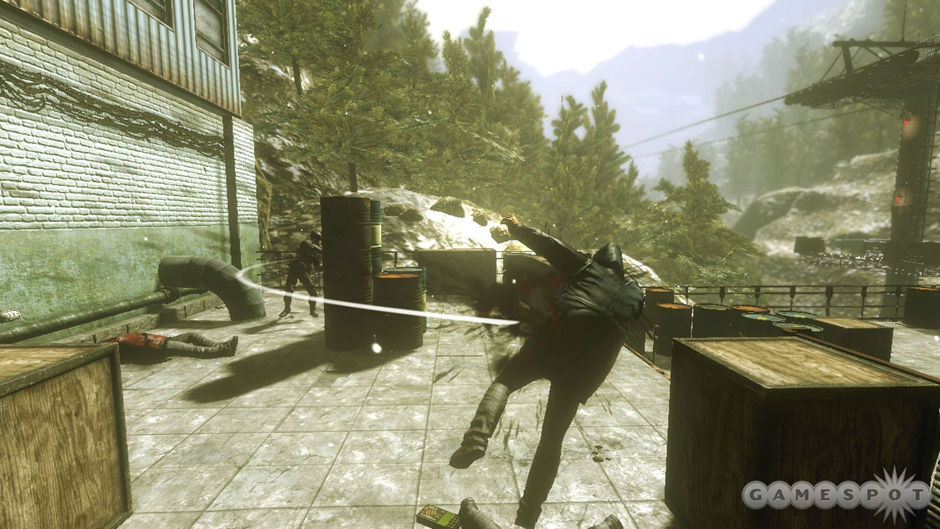Trending
Opinion: How will Project 2025 impact game developers?
The Heritage Foundation's manifesto for the possible next administration could do great harm to many, including large portions of the game development community.

Featured Blog | This community-written post highlights the best of what the game industry has to offer. Read more like it on the Game Developer Blogs or learn how to Submit Your Own Blog Post
In the first two parts of this series of publications devoted to training game and level designers, I addressed the importance of soft skills, an essential complement to know-how. Let's now address a topic that seems far from design but which a game designer must be concerned with: Marketing and communication.

A common mistake among game designers is underestimating the importance they should give to marketing.
« Why should I care about marketing? How am I affected by the communication strategy? My responsibility is to design a fun game! Marketing and communication are the responsibilities of the publisher. »
Yes, but no.
It is true that the marketing teams of the publisher or studio, if the studio self-publishes its game, are responsible for setting up communication campaigns. But they are not responsible when design choices weaken the game's interest in the eyes of the media and players.
The very large-scale distribution of media and social networks has led to hyper-abundant information, and communicating about a good game is no longer enough to attract attention.
The situation is made even more difficult by the plethora of games on offer, many of which are free and easily downloadable.
A game designed without marketing in mind risks being a commercial failure. The design team must, therefore, ask the right questions right from the concept phase.
What are they? Let's start with the most important question: What is my game's USP, the Unique Selling Point?
The USP is the feature of the game concept that must be original enough to attract attention. Developing a concept around its USP is probably the best advice we can give to a game designer, junior or senior.
The USP can apply to any aspect of the game: Its gameplay or mix of gameplays, its game modes, its aesthetics, its narrative theme, its control interface, its atmosphere, its use of an IP, its distribution platform, etc.
The USP has two functions:
First, to differentiate your game from the countless other titles that saturate the media and social networks. Nothing is more attractive than the promise of a new experience. This is how a USP works: It promises players new sensations, it stimulates their curiosity, it offers them unknown challenges.
The second function of the USP is to become the pillar of the communication strategy that will be implemented during the marketing campaign. A basic rule in communication is to develop a strong, distinctive, and simple “message” concerning the product you wish to communicate about. “Strong” means talking about something likely to generate a lot of curiosity. “Distinctive” means that the product must not be confused with any other. Finally, “simple,” tells us that the message must be understandable through an image, a title, or a slogan.
It becomes clearer why game designers are concerned with marketing from the concept phase: They must design it around a real USP.
So what advice can we give for finding a good USP?
The answer varies depending on the studio's profile: Is it a small indie studio or a large structure developing a game around an IP?
In the case of the indie studio, here are the best practices:
Define a USP that will be immediately visible; Just by looking at a screenshot, players must understand that your game will offer them a different experience. Never forget that it is through an image or video that your future players will discover your game and decide whether it is worth playing in a fraction of a second. A powerful publisher can do without a visual USP to draw attention to a game; it has a high-profile IP or a significant communication and player acquisition budget. But this is not the case for an indie studio that can only rely on its USP to get noticed.
Do some research to make sure the USP is truly unique. You might then discover that another game is already using it. If the latter succeeds, change the USP; your USP is no longer one! But if this game was a failure, that does not call into question the relevance of the USP: Try to understand why this game was a failure and learn from it.
Ensure that your team's skills and resources are sufficient to develop your USP. Never overestimate the difficulties and time needed to develop something new.
Build your game entirely around its USP, even if it means reducing your ambitions in terms of content.
To illustrate my point, here is the case of Timecode Studio and its game, Twist and Pop. It is a match-3 game for which I designed the level design.
In 2015, Timecode studio decided to develop a Match-3 mobile game to ride on the global success of this genre. But the market was crowded with many Candy Crush clones. The designers then had the idea of differentiating the game by offering traditional match-3 gameplay but in a completely different format: Players had to align three objects, no longer on a grid, but by rotating two circles.
The result was stunning. It had exactly the same gameplay as traditional match-3 but in a completely new graphic style. The graphic differentiation was accentuated by the simplicity of shapes and colors, which was very far from the garish style of many match-3 games. The game stood out visually from its competitors, which was the USP that Timecode was looking for.

My recommendations are different in the case of a large structure developing a game around an IP.
Indeed, the IP itself is often the USP, but the latter is perhaps not enough to make the game exciting: The IP will attract the attention of players and the media, but if the gaming experience appears to be too classic, you will then have to innovate.
Make sure that your innovation is not central to the gameplay of your game. Indeed, games developed around IPs must often be published on a date scheduled well in advance. However, if your innovation requires much more time than expected for its development and it is central to the gaming experience, you risk “missing” the release date for your game.
Propose an innovation directly related to the IP. You will thus be able to “surf” on the intrinsic force of attraction of the latter. In addition, you will prevent the owner of the IP, who often has the last word, from refusing your proposal altogether, a situation which I witnessed directly on Duck Dynasty, a PS4 and Xbox One game published by Activision, where I acted as a consultant. The IP owner refused our scenario based on our entire level design.
As creative director, I was confronted with these issues while contributing to Wanted - Weapons Of Fate.
Published by Universal, the producer of the eponymous film, Wanted - Weapons of Fate was to be released alongside the feature film; deadlines were particularly tight. We therefore took little risk on the core gameplay based on third-person shooter mechanics. But to bring a touch of novelty and stick to the franchise's specificities, we added a complementary curved shot mechanic. It provides a challenge, is very rewarding to use, and fits the film perfectly.
However, it is not central to the gameplay and is not essential to confronting enemies. If this mechanic had proven too complicated to develop, we could have easily “removed it” from the game.

In the next part of this publication, I will discuss two other aspects of marketing that game designers must consider.
Link to part 1
Link to part 2
Pascal Luban
Game designer & creative director, freelance
28+ years of experience serving game developers and publishers
You May Also Like